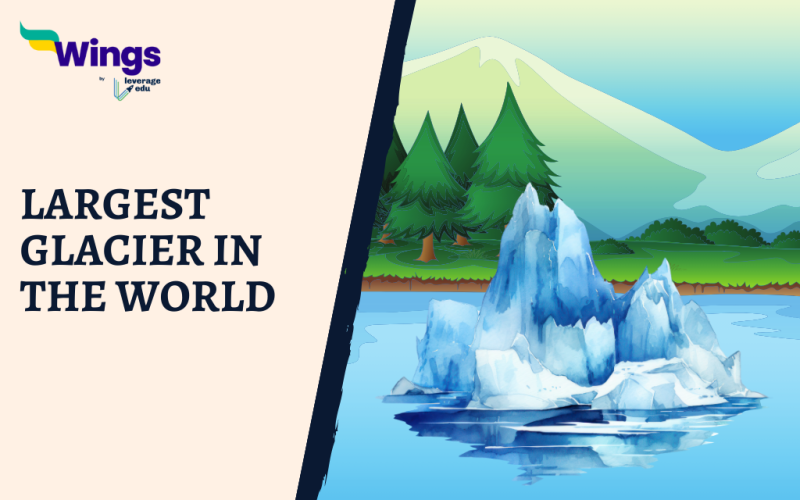Lambert Glacier is considered one of the largest glaciers in the world, This is not only the largest glacier in the world but also one of the speediest glaciers in the world, Read this blog to learn more about what glaciers are and some interesting and important facts about the largest glacier in the world.
Also read: 25+ Unknown Facts About Technology
What are Glaciers?
Table of Contents [show]
Glaciers can be defined as massive bodies of ice and snow that are formed over some time, Here are some facts about glaciers:
- Formation: The ice sheets, which are popularly known as glaciers, are formed by the accumulation of snowfall, which can exceed the amount that melts and evaporates directly into the atmosphere over many years.
- Movement: The glacier slowly flows and deforms due to the enormous pressure created by the accumulation of ice.
- Various Types: There are several different types of glaciers, that come in various forms and sizes, such as continental ice sheets like Greenland and Antarctica, which are the largest glaciers.
- Because they store enormous volumes of freshwater and have an impact on weather patterns, glaciers are essential to the climate of Earth. When they melt, they also contribute significantly to freshwater runoff.
Also read:23 Interesting Facts About Himalayas: The King of Mountains
The Largest Glacier in the World
The largest glacier in the world, known as Lambert Glacier, is located in East Antarctica and is over 80 km wide, 400 km long, and 2500 m deep.
- The Lambert Glacier drains 8 percent of the Antarctic ice sheet to the east and flows northward to the Amery Ice Shelf.
- John H. Roscoe, an American geographer, named the glacier in 1952.
- Not only is it the largest glacier but it is also the fastest glacier in the world, which speeds up to 1200 meters
- There are several tributaries of the Lambert Glacier, namely Fisher Glacier, Geysen Glacier, Mellor Glacier, Collins Glacier, and Arriens Glacier.
Also read: 28 Interesting Facts About Indian Railways
Top 10 Largest Glaciers in the World
Other than Lambert Glacier, the top 10 glaciers in the world are listed in the table below:
| LARGEST GLACIERS IN THE WORLD | |||
| S. No. | Glacier | Location | Area |
| 1. | Lambert Fisher Glacier | Antarctica | 400 km |
| 2. | Hubbard Glacier | Alaska, USA | 122 km |
| 3. | Fedchenko Glacier | Tajikistan | 77 km |
| 4. | Siachen Glacier | India & Pakistan | 75 km |
| 5. | Biafo Glacier | Pakistan | 67 km |
| 6. | Bruggen Glacier | Chile | 66 km |
| 7. | Baltoro Glacier | Pakistan | 62 km |
| 8. | South Inylchek Glacier | Kyrgyzstan & China | 61 km |
| 9. | Jostedal Glacier | Norway | 60 km |
| 10. | Batura Glacier | Pakistan | 56 km |
FAQs
Lambert Glacier stands out as the largest glacier globally, located in East Antarctica. Its impressive dimensions include being over 80 km wide, 400 km long, and 2500 m deep. Moreover, it is renowned for its remarkable speed, with rates of up to 1200 meters per year, making it the fastest glacier known.
Lambert Glacier, the largest glacier draining approximately 8 percent of the Antarctic ice sheet, plays a crucial role in regulating global climate and sea levels. Its melting contributes significantly to freshwater runoff, affecting ocean salinity and circulation patterns. Moreover, its flow towards the Amery Ice Shelf can influence local ecosystems and habitats, shaping the dynamics of Antarctic wildlife.
Lambert Glacier was named by John H. Roscoe, an American geographer, in 1952. Roscoe’s recognition of this colossal ice formation not only solidified its place in geographical records but also paid homage to the Lambert family, a prominent name in Antarctic exploration and research.
Related Blogs
Hope you had fun reading these interesting facts about science. If you like reading about facts, you can visit our interesting facts page to read more such blogs.
 One app for all your study abroad needs
One app for all your study abroad needs















 45,000+ students trusted us with their dreams. Take the first step today!
45,000+ students trusted us with their dreams. Take the first step today!
